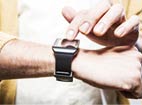The next version of Bluetooth has arrived. The Bluetooth Special Interest Group (SIG) yesterday said that Bluetooth 5 has become the latest core specification of the hugely successful standard. The group says that Bluetooth 5 offers longer range, great speeds and larger broadcast message capacity. It is optimized for the Internet of Things (IoT).
More specifically, the new version showcases a four-fold increase in range, doubles the speed, and increases message capacity by a factor of eight. The supply chain is ramping up for the change. For instance, Nordic Semiconductor has released the nRF52 series system on a chip (SOC), which supports several specifications and standards, including Bluetooth 5.
One of the keys to the move to the new version of the standard is that power use written into Bluetooth Low Energy (BLE), a previous version of Bluetooth, will be brought forward. The nRF52 delivers the new speed and range specs while maintaining BLE power usage, EDN Europe says.
On one level, the new version of Bluetooth seems to be a normal speed and range upgrade. To a great extent, that is so. However, it offers choices, according to BGR, that should make consumers pay attention. It is not feasible, the story says, to offer all the improvements in the same device. Nor is it necessary, since different attributes appeal to different groups of end users. Thus, developers “have the option of trading off some bandwidth for improved range, or shorter range for much higher data speeds,” the story says.
The EE Times’ story on the new version suggests that the Bluetooth SIG is being quite active. The upgrades are based on new modulation and forward error correction (FEC) schemes.
It also sets Bluetooth up for the future. The increase of messaging capability from 30 bytes to about 256 bytes makes it possible that beacons will take off. This ultimately could be a big deal:
Beacons are a much-talked-about but still nascent application, with about 8 million units shipping this year and a total of 565 million by 2012, according to ABI Research. They are used for retail advertising, automated museum docents, and even broadcasting a URL to a manual so that OEMs don’t have to print and ship one with a product.
A final puzzle piece in Bluetooth’s evolution is the implementation of a mesh specification. That, writes Rick Merritt, is “the next big thing.” A mesh network is one in which no station receives data from just one other. The parallel routing makes it much less likely that a network will melt down and leave stations unable to communicate. There are different approaches to mesh networking, the story says.
Bluetooth is on just about every mobile device, though it isn’t universally used. The key for the Bluetooth SIG isn’t to get more penetration. It has all it needs. The key mandate is to ensure that the features that it offers keep pace with competitors’. By doing so, it can lose the “always there, not always used” label. Bluetooth 5, and other improvements that are on the way, seem to be good steps in that direction.
Carl Weinschenk covers telecom for IT Business Edge. He writes about wireless technology, disaster recovery/business continuity, cellular services, the Internet of Things, machine-to-machine communications and other emerging technologies and platforms. He also covers net neutrality and related regulatory issues. Weinschenk has written about the phone companies, cable operators and related companies for decades and is senior editor of Broadband Technology Report. He can be reached at cweinsch@optonline.net and via twitter at @DailyMusicBrk.



